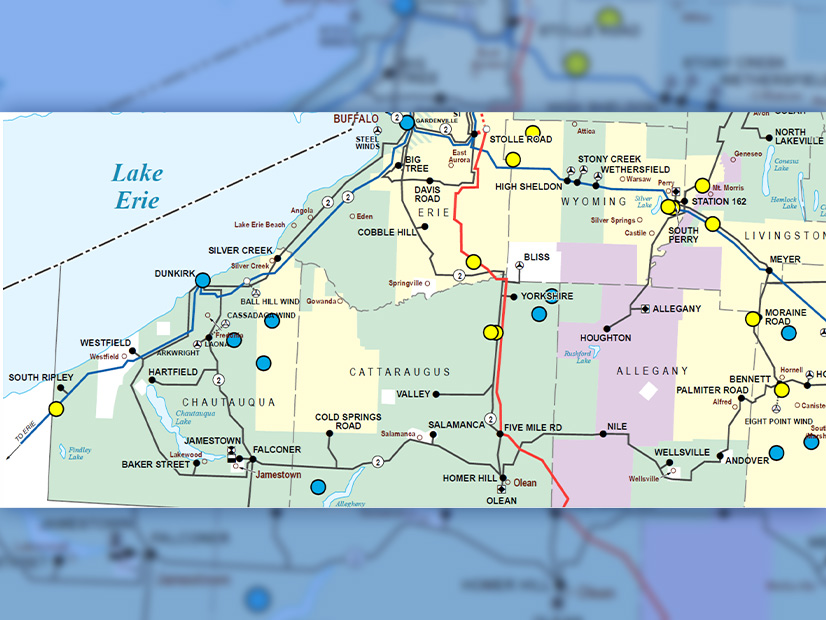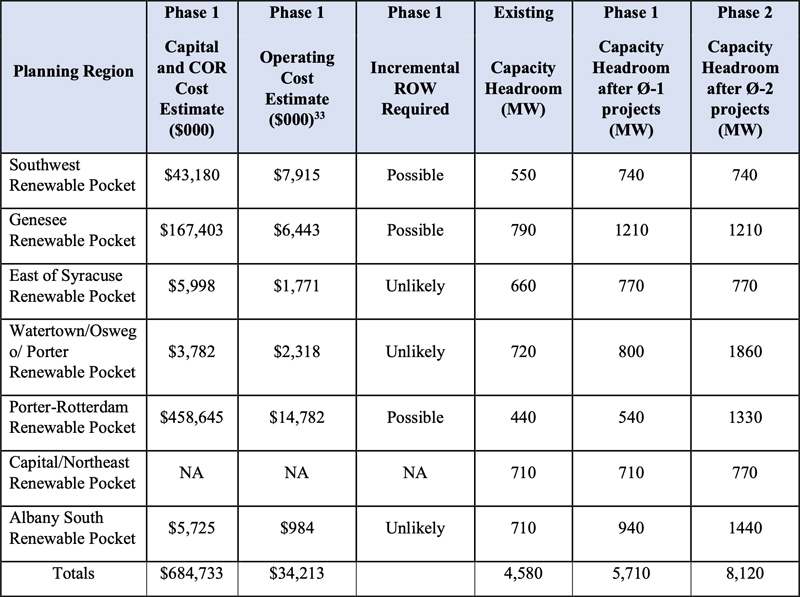
A group of large electricity consumers opposes National Grid’s (NYSE:NGG) petition to New York state regulators to allow development of and cost recovery for 19 transmission upgrade projects (Case Nos. 20-E-0197 and 20-E-0380).
National Grid subsidiary Niagara Mohawk Power’s November 2021 petition to the Public Service Commission included a 2030 Regional Plan and also sought approval of cost deferrals and surcharge recoveries from its approximately 1.6 million electric customers.
But “it is not clear that all, or even many or any, of the proposed projects truly are needed at this time,” Multiple Intervenors (MI), an ad hoc group of more than 50 large commercial, industrial and institutional energy consumers, said Monday. MI was party to a recently concluded electric and gas rate proceeding for Niagara Mohawk.
None of the 19 projects was included in the $3 billion electric capital expenditures in a three-year rate plan approved in January, the group noted.
“Thus, the proposed projects either were not subjected to the typical scrutiny attendant in rate proceedings or, perhaps in certain instances, were subjected to such scrutiny and ultimately excluded from the long list of proposed projects used to justify the utility’s negotiated level of capital expenditures,” MI said.
National Grid argued in its petition that “each of the company’s Phase 1 solutions were designed after assessing existing reliability-based transmission projects – those projects already requiring upgrades to address condition issues, enhance storm resiliency, or improve operational performance – to minimize the cost to unbottle renewable energy,”
Under the New York Public Service Commission’s new transmission planning rules, Phase 1 projects are traditional utility investments that address system reliability or resilience issues, while Phase 2 projects are primarily intended to facilitate the state’s environmental targets. (See New York Adopts Groundbreaking Tx Investment Rules.) National Grid said it assessed existing reliability-based projects based on their ability to improve renewable energy deliverability as designed or improve deliverability if redesigned.
 The table summarizes the capital investment, including cost of removal, and operating cost estimates, incremental right of way requirements and improvements to the import/export capability (headroom) of each region. | National Grid
The table summarizes the capital investment, including cost of removal, and operating cost estimates, incremental right of way requirements and improvements to the import/export capability (headroom) of each region. | National GridMI countered that the proposed projects would expose customers to near-term and long-term rate impacts.
“The impacts that would flow from the proposed authorizations should not be evaluated in a vacuum,” MI said.
In addition to the more than $3 billion in budgeted electric capital expenditures approved through fiscal year 2025, the commission previously has authorized tens of billions of dollars in customer collections for various clean energy programs and initiatives, and wholesale energy prices have jumped substantially in 2022, MI said.
“Because customer funds are far from limitless, and rising energy costs have significant, negative impacts on economic activity, the commission needs to ensure that Niagara Mohawk’s electric rates are shielded from capital expenditures that are not truly necessary for safe and reliable electric service,” MI said.
The group also opposes the approval of cost deferrals and surcharge recoveries, saying there is no clear urgency to start and complete all of the upgrades proposed now during a major expansion of Niagara Mohawk’s normal electric capital expenditures budget and while large-scale renewable generation development is occurring at a slower pace than previously had been anticipated.
“Quite simply, the commission needs to proceed very cautiously, else future electric rates and prices will become less affordable for customers and even less competitive with other regions, thereby harming state and local economies that still are reeling from the effects of the COVID-19 pandemic,” MI said.
National Grid said the 2030 Regional Plan “represents timely solutions to excessive renewable energy curtailments or ‘bottling,’ which leads to the undesirable effect of chilling generation investments, increasing energy prices and continuing to rely on the generation commitment and dispatch of fossil-fueled resources.”
The Alliance for Clean Energy New York (ACE-NY) supports National Grid’s petition, noting that the utility deems several of the Phase 1 upgrades as needed to enable further upgrades that will alleviate constraints threatening renewable development.
“Indeed, Grid points to the high-execution risk that Phase 1 upgrades pose to subsequent Phase 2 upgrades if Phase 1 upgrades are not approved” in a timely manner in certain areas of the state, ACE-NY said. “National Grid emphasizes it has staged the deployment of both Phase 1 and Phase 2 projects to provide benefits in the time frames needed for current and planned renewable generation development.”

